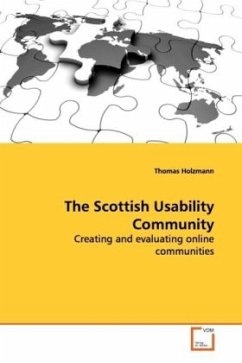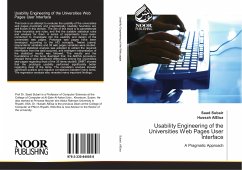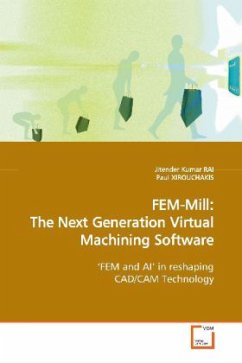
Connecting the Usability and Software Engineering Life Cycles:
Using a communication-fostering software development framework and cross-pollinated computer science courses
Versandkostenfrei!
Versandfertig in 6-10 Tagen
52,99 €
inkl. MwSt.

PAYBACK Punkte
26 °P sammeln!
Typically, development in the software engineeringlife cycle for the system functionality is doneindependently from development in the usabilityengineering life cycle for the user interface, withlittle communication between them. This lack ofcommunication results in reduced overall situationalawareness, higher risks in managing design changes,missed opportunities to coordinate and synchronizerelated activities, and delayed possibilities tocheck constraints and dependencies. In this book wedescribe Ripple, a three-part framework to foster andstructure communication among developer roles withint...
Typically, development in the software engineering
life cycle for the system functionality is done
independently from development in the usability
engineering life cycle for the user interface, with
little communication between them. This lack of
communication results in reduced overall situational
awareness, higher risks in managing design changes,
missed opportunities to coordinate and synchronize
related activities, and delayed possibilities to
check constraints and dependencies. In this book we
describe Ripple, a three-part framework to foster and
structure communication among developer roles within
these two life cycles and a corresponding real world
case study. The first part is an abstract model that
formally defines the concepts and relationships among
entities in the development space. The second part is
an implementation schema that reifies the abstract
conceptual model into a concrete communication
structure for application within real-world efforts.
The third part is an implementation instance that
tailors this schema to a specific project, including
the scope, goals, parameters, personnel, development
activities, roles, and work products particular to
that project.
life cycle for the system functionality is done
independently from development in the usability
engineering life cycle for the user interface, with
little communication between them. This lack of
communication results in reduced overall situational
awareness, higher risks in managing design changes,
missed opportunities to coordinate and synchronize
related activities, and delayed possibilities to
check constraints and dependencies. In this book we
describe Ripple, a three-part framework to foster and
structure communication among developer roles within
these two life cycles and a corresponding real world
case study. The first part is an abstract model that
formally defines the concepts and relationships among
entities in the development space. The second part is
an implementation schema that reifies the abstract
conceptual model into a concrete communication
structure for application within real-world efforts.
The third part is an implementation instance that
tailors this schema to a specific project, including
the scope, goals, parameters, personnel, development
activities, roles, and work products particular to
that project.












